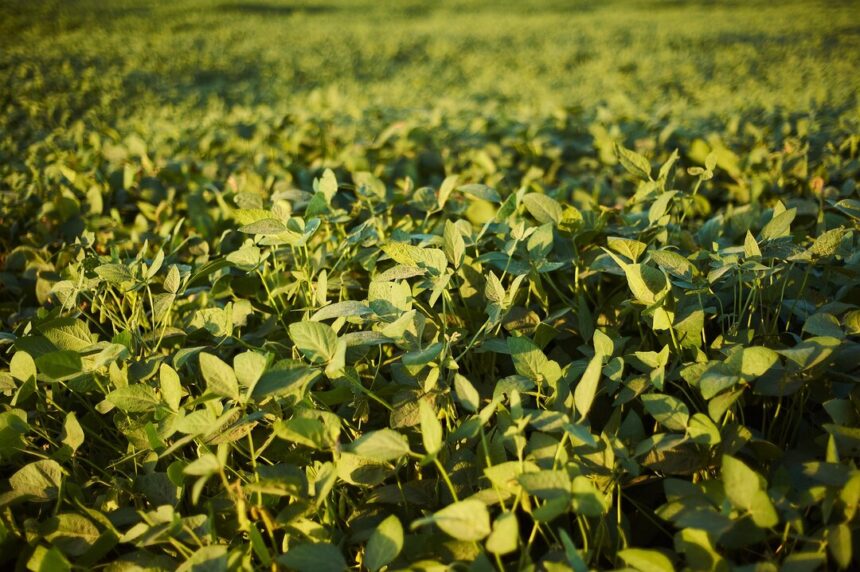Soybeans are a valuable crop in South Africa, prized for their versatility in food production, animal feed, and industrial applications. As global demand for soybeans continues to rise, maximizing the quality and yield of soybean crops is essential for meeting market demands and ensuring agricultural sustainability. Here are several techniques for enhancing quality and yield in soybean production in South Africa:
1. Soil Health Optimization:
- Begin with soil testing to assess nutrient levels and pH balance. Based on the results, amend the soil with appropriate fertilizers and organic matter to optimize nutrient availability for soybean plants.
- Implement soil conservation practices such as minimum tillage, cover cropping, and crop rotation to improve soil structure, enhance water retention, and minimize erosion, ultimately promoting healthy root development and higher yields.
2. Variety Selection:
- Choose soybean varieties that are well-adapted to local growing conditions, including climate, soil type, and pest pressures. Consider traits such as yield potential, disease resistance, and maturity length when selecting soybean varieties for planting.
- Experiment with high-yielding soybean cultivars that have been specifically bred for South African conditions, including drought tolerance, pest resistance, and desirable agronomic traits.
3. Planting Practices:
- Optimize planting density and spacing to maximize soybean yield potential while avoiding overcrowding and competition for resources. Follow recommended planting depths and row spacing guidelines based on the selected soybean variety and local growing conditions.
- Consider planting soybeans in narrow rows or using precision planting techniques to achieve uniform plant spacing and promote canopy closure, which can enhance weed suppression and light interception.
4. Irrigation Management:
- Implement efficient irrigation practices to ensure adequate moisture levels throughout the soybean growing season, particularly during critical growth stages such as flowering and pod filling.
- Consider adopting moisture-saving irrigation technologies such as drip irrigation, furrow irrigation, or moisture sensors to optimize water use efficiency and minimize water stress in soybean crops.
5. Pest and Disease Control:
- Develop an integrated pest management (IPM) plan to effectively manage pests and diseases while minimizing reliance on chemical pesticides. Monitor soybean fields regularly for signs of pest infestation or disease outbreaks and take timely action to address them.
- Utilize pest-resistant soybean varieties, biological control agents, cultural practices, and crop rotation to reduce pest and disease pressure and protect soybean yield and quality.
6. Fertilization and Nutrient Management:
- Develop a targeted fertilization plan based on soil test results, soybean nutrient requirements, and crop stage. Apply fertilizers strategically to meet the nutritional needs of soybean plants and optimize yield potential.
- Consider using precision agriculture technologies such as variable rate application and nutrient mapping to tailor fertilizer applications to the specific requirements of soybean crops and maximize nutrient use efficiency.
7. Weed Management:
- Implement effective weed control measures to minimize competition for nutrients, water, and sunlight and prevent yield losses in soybean crops. Utilize pre-emergence and post-emergence herbicides, mechanical cultivation, and crop rotation to manage weed populations effectively.
- Consider adopting weed management strategies such as integrated weed suppression systems (IWSS) or cover cropping with allelopathic plants to suppress weed growth and promote soybean yield and quality.
8. Timely Harvesting and Post-Harvest Handling:
- Harvest soybean crops at the optimal stage of maturity to maximize yield and quality. Monitor soybean moisture levels closely to determine the ideal harvest time and minimize losses due to shattering or weathering.
- Implement proper post-harvest handling and storage practices to preserve soybean quality and minimize losses from pests, moisture, and spoilage. Utilize drying, cleaning, and storage facilities equipped with appropriate ventilation and temperature control to maintain soybean quality over time.
By implementing these techniques for enhancing quality and yield in soybean production, farmers in South Africa can optimize their soybean crops’ performance, resilience, and profitability. Through a combination of sound agronomic practices, modern technologies, and strategic management approaches, soybean producers can meet the increasing demand for soybeans while promoting sustainable agriculture for future generations.
Join 'Farmers Mag' WhatsApp Channel
Get the latest Farming news and tips delivered straight to your WhatsApp
CLICK HERE TO JOIN






